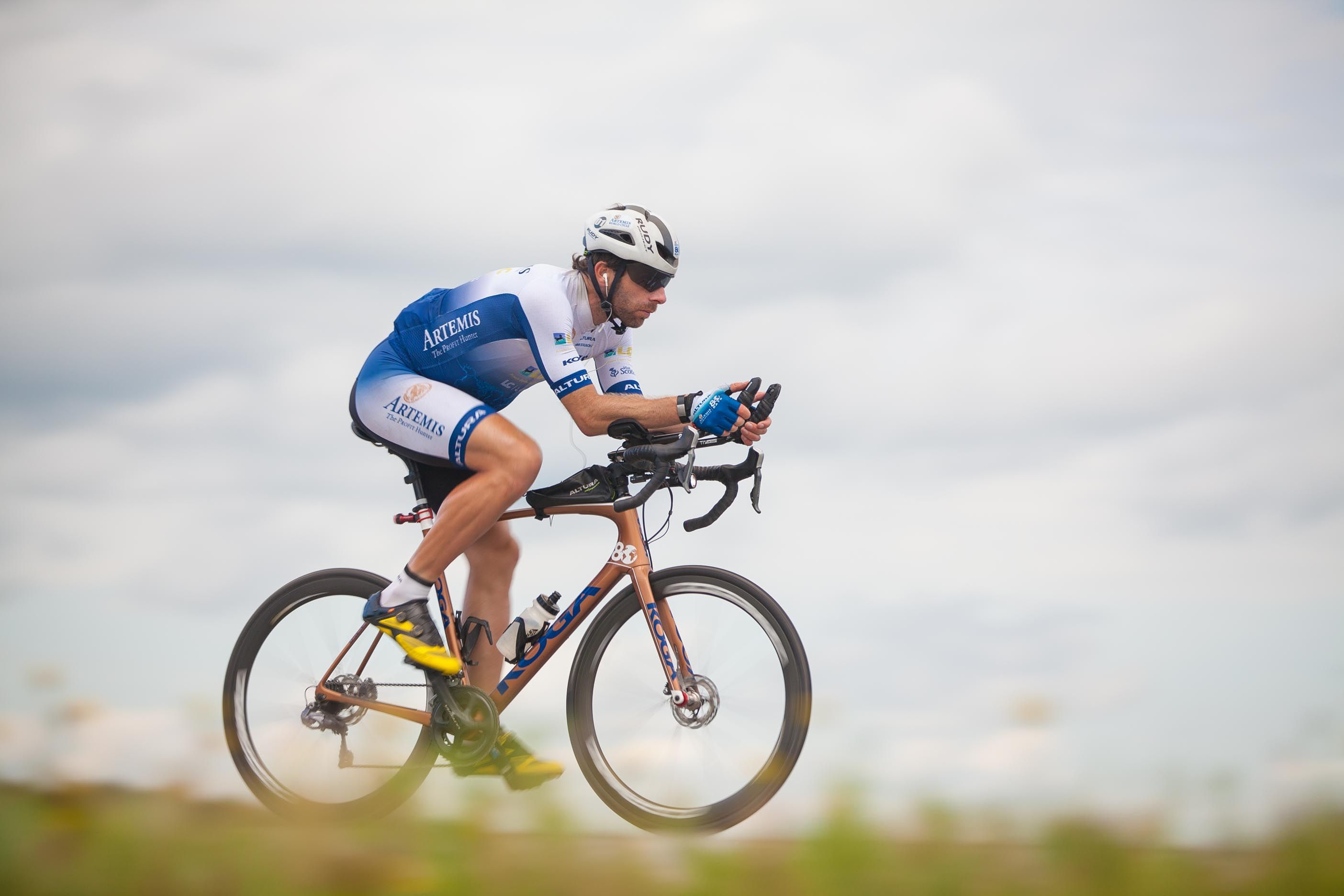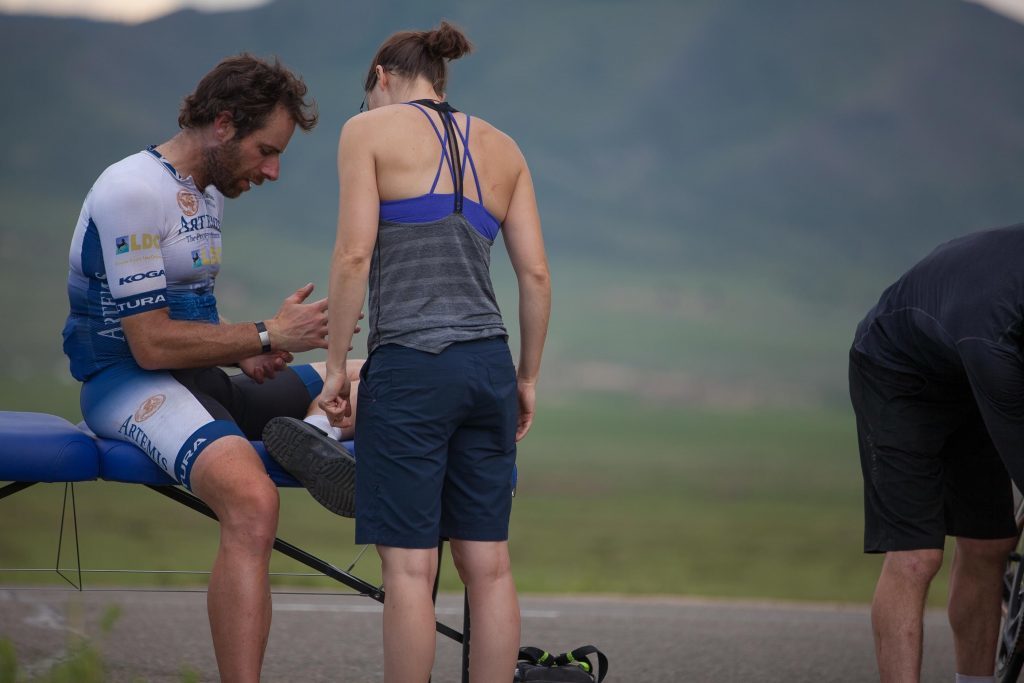
MARK BEAUMONT made history last week by becoming the first man to cycle around the world in 80 days.
The Perthshire-born endurance athlete bettered the former record of 123 days to zoom around the globe in 78 days, 14 hours and 40 minutes.
The 34-year-old cycled 18,000 miles, crossing Europe, Russia, Mongolia and China, before journeying across Australia, New Zealand and then North America.
So just how did he accomplish the remarkable feat?
We spoke to his performance director Laura Penhaul, who accompanied Mark during the ride, and endurance cycling expert Professor Simon Jobson, author of Ultra Distance Cycling.
They told us how his body coped with the demands of cycling around the globe in only 80 days.
Muscles
Mark is on the heavier side – he was around 14.5 stones when he started the challenge. In comparison, a Tour de France cyclist is around 11 stones, explained Laura. He has a very low amount of fat though, his weight is down to his large, dense muscles.
His thighs, quadriceps and calf muscles are especially powerful.
We’re not sure if he lost muscle in his leg during his journey, but he certainly lost muscle in his upper body as it wasn’t being used.
Heart
Mark’s heart is in what we’d call the elite bracket, the top level, said Laura. When he wakes up, his heart beats at 41-42 beats per minute. An average healthy person’s heart clocks in at around 60.
It may be that’s down to genetics, years of exercise, or both — Mark’s been doing these cycles since he was 12.
Endurance training leads to dramatic improvements in cardiovascular function, added Professor Jobson.
The heart grows stronger and more efficient, having to work less hard to pump blood round the body. The heart of an ultra-distance cyclist would likely be larger than that of a regular person.
Bones
Mark’s a well-rounded athlete — as well as a cyclist, he’s a keen runner, said Laura. Running makes your bones denser which means Mark has more weight than a typical endurance cyclist.
Professor Jobson reckons although there would be changes in his bones, they wouldn’t be a long-term problem.
After nearly 3 months of nearly continuous cycling, Mark’s bone mineral density probably dropped, he explained. My guess, though, is that this would return to normal fairly quickly after the ride — assuming he doesn’t jump straight back on to go the other way.
Feet
We had real problems with footwear to begin with, said Laura. You need good shoes to pedal for 16 hours a day, but Mark was struggling with pains as it wasn’t quite right.
He developed a deep blister on his foot. Every break he took I had to make sure his foot was elevated as we tried various creams and gels.
It got much worse when there was a strong headwind as he had to pedal harder. Alaska was a bit of a nightmare.
Hands
When training in his cycle around Britain, Mark developed a Non Freezing Cold Injury in his hand, said Laura. That means when it’s exposed to cold it now flares up. It’ll always be an issue for him.
We had to protect his hand with large Goretex gloves but even those could only do so much.
During cycles in Mongolia the roads were quite bumpy. Mark was quite surprised to develop very thick callouses on the base of his hands.
Intrepid cyclist Mark Beaumont heads round the world in 80 days by bike and banana
Lungs
Compared to Joe Bloggs, Mark has very good lung capacity, said Laura. We measure the amount of oxygen he can process with something called the VO2 Max rate.
An average person has around 30, while his is 56. Not quite an Olympic rower level, but still very good.
Surprisingly, Mark’s lung size isn’t hugely important when it comes to long distance cycling, according to Professor Jobson.
An endurance athlete might be able to take in a huge amount of air, over 150 litres, per minute but they can actually only extract a small amount of oxygen from this.
Stomach
When on an endurance cycle Mark aims to consume 9000 calories a day — this was the real challenge, said Laura.
We tried to keep the food varied but also safe. I didn’t give him any non-peelable fruit in many countries, because we couldn’t be sure of the hygiene.
We relied a lot of frozen food, I’m sure he never wants to see broccoli again. Surprisingly, peanut butter on white bread sandwiches went down well — they’ve got good energy.
And the lovely Australians gave us brownies on the side of the road. These were a real morale booster — Mark has a sweet tooth.
Mind
He’s a very focused guy, and I didn’t worry too much about him suffering from mental fatigue, added Laura. He went through his iPod very quickly so started borrowing the team’s iPods.
That means he had to listen to mine, which was quite embarrassing. He’d be cycling through rural China, listening to the Backstreet Boys. But he seemed quite happy.
Distraction techniques are common among long-distance cyclists — but they’re not always required.
There are many times when an endurance cycle isn’t boring, at least to the experienced, resilient, ultra-distance cyclist.
The simple rhythm of cycling, some nice scenery and a touch of good weather will quickly lead to a state of ‘flow’ where the pedals seem to be turning themselves.

Enjoy the convenience of having The Sunday Post delivered as a digital ePaper straight to your smartphone, tablet or computer.
Subscribe for only £5.49 a month and enjoy all the benefits of the printed paper as a digital replica.
Subscribe